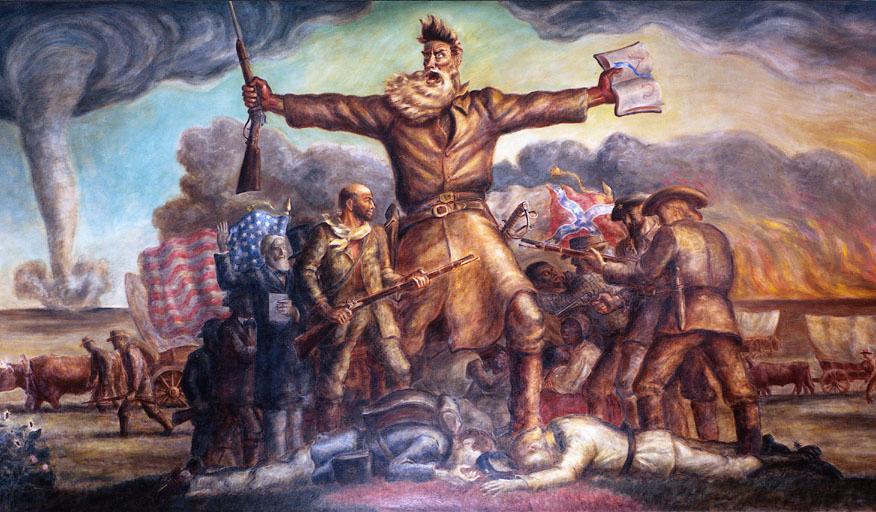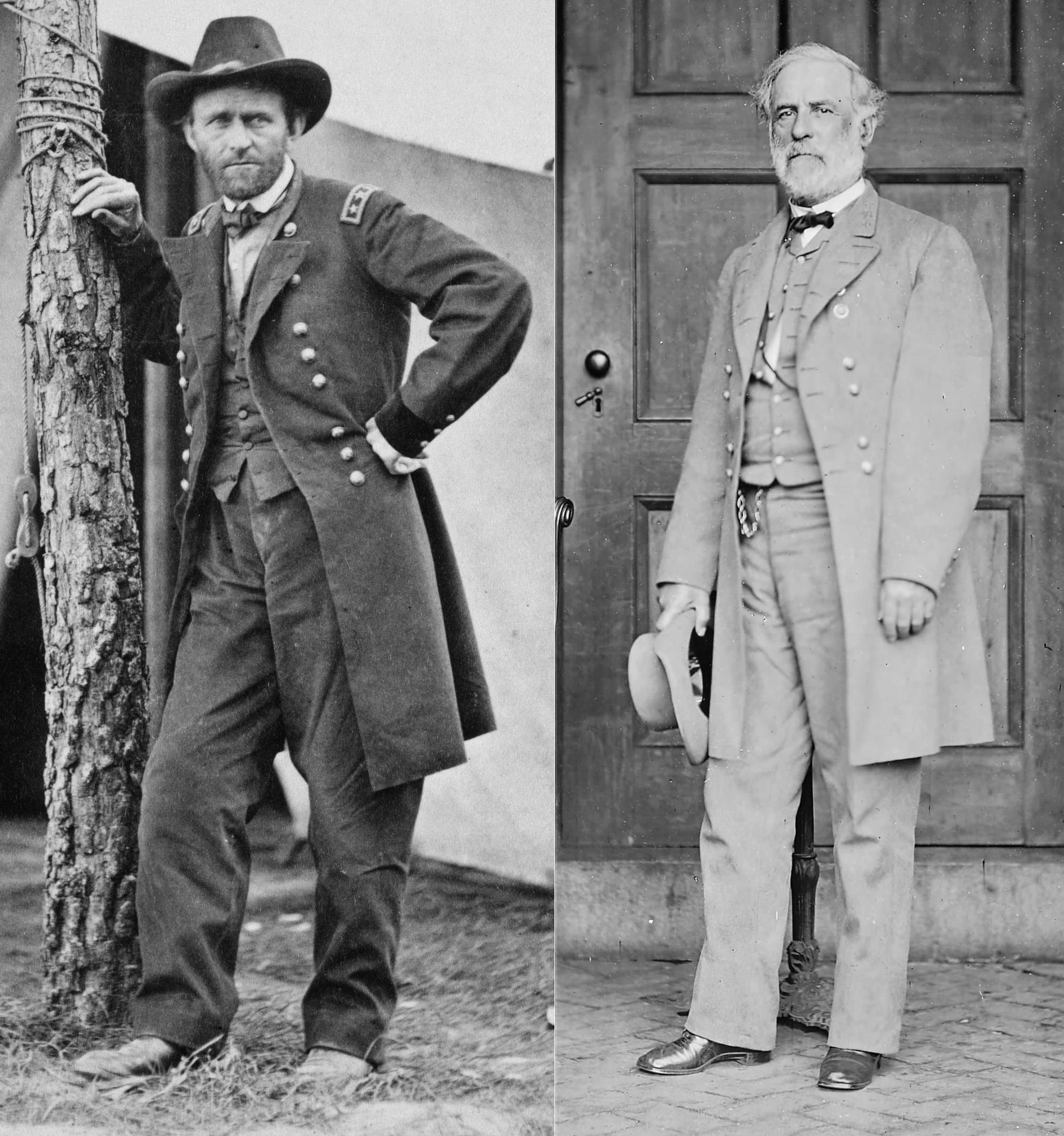Unit 5 Overview: Toward the Civil War & Reconstruction (1848-1877)
7 min read•june 18, 2024
E
Eric Leiden
Jillian Holbrook
AP US History 🇺🇸
454 resourcesSee Units
During this period, the United States attempted to figure out how to govern its newly acquired territories. In the process, the issue of slavery rises to the forefront, as every introduced territory arouses a debate over whether or not the region will be a free or slave state. The discussion between pro-slavery advocates and anti-slavery advocates ultimately leads to the Civil War. 💣
Westward Expansion and Manifest Destiny 🌎
Manifest Destiny was the belief that it was the divine right and duty of the United States to expand its territory and spread its values, such as democracy and capitalism, across the entire continent of North America. The concept of Manifest Destiny was used to justify the expansion of the United States, particularly in the West, through means such as the Louisiana Purchase, the Mexican-American War, and the forced relocation of Native American tribes. The belief in Manifest Destiny played a significant role in shaping American foreign policy and conflict.
The end of the Mexican-American War was brought about by the Treaty of Guadalupe-Hidalgo, and the resulting Mexican Cession led to intense debate over the expansion of slavery. Although some, like David Wilmot, advocated for all territories won from Mexico to be forever free, Congress shot down the Wilmot Proviso. The debate over slavery in America's new land gained full steam. Compromises only delayed rising stratification and tension.
Compromise of 1850 🤝
In 1850, to ease the tension between pro and anti-slavery advocates, Henry Clay introduced the Compromise of 1850. Two of the most important aspects of the Compromise were the inclusion of a stronger Fugitive Slave Act and the idea of Popular Sovereignty.
Fugitive Slave Act ⛓️
The Fugitive Slave Act was intended to mark a compromise to the fact that California would enter the Union as a free state. However, the Fugitive Slave Act proved a huge boon for the Southern states in the long run, and its enforcement infuriated the Northerners, creating much more tension. Although Harriet Tubman and other conductors on the Underground Railroad successfully brought many slaves to freedom, a large number of free slaves found themselves captured and returned to bondage.

Harriet Tubman, Image Courtesy of Wikipedia
Popular Sovereignty and the Kansas-Nebraska Act 📃
It appeared that Popular Sovereignty might be the logical way to handle slavery in the new territories by letting the voting participants decide. However, this stirred up a hornet's nest of anger when Stephen Douglas worked the Kansas-Nebraska Act through Congress. The Kansas-Nebraska Act forced the repeal of the Missouri Compromise and allowed popular sovereignty to determine the fate of territories previously prohibited from slavery.
Bleeding Kansas 🩸
Following the passage of the Kansas-Nebraska Act, pro- and anti-slavery supporters poured into new territories to determine the fate of the state in an election. Border ruffians brought about the passage of a fraudulent Pro-Slavery Constitution in Kansas. As a result, John Brown and anti-slavery forces contributed to the violence by killing five pro-slavery advocates. The tension ultimately led to many killed and wounded and multitudes of businesses and homes destroyed, an event that became known as Bleeding Kansas.

Image Courtesy of Wikipedia
Dred Scott Case ⚖️
Dred Scott, a slave, argued for freedom after his master moved him to a free territory. In the Dred Scott Case, the Supreme Court ruled against Dred Scott and in favor of western territories being open to slavery, prompting outrage from the North. The outcome solidified the growing Republican Party, and the issue became a central focus of the Lincoln-Douglas Debates of 1858. 💼 During this time, Lincoln was not an abolitionist, but he supported the non-expansion of slavery.
Lincoln's Election of 1860 🗳️
Ultimately, the election of the Republican Lincoln into the presidency led South Carolina—followed by several southern states—to secede from the Union. The Battle of Fort Sumter triggered the Civil War, beginning one of the bloodiest conflicts in American history. 💣
The Civil War 💣
The North had the advantages of population, money, transportation, industrial output, and Lincoln's leadership.💲🚂 However, the South had more competent generals and the "hope" of a foreign alliance gained from King Cotton Diplomacy. 🎖️👑 ☁️
Key Battles 💥
The battle of Antietam was the bloodiest day in history, leading Lincoln to issue his Emancipation Proclamation freeing all the slaves in the REBELLING states. The Battle of Gettysburg served as the turning point of the war in 1863. The Battle of Vicksburg separated the Confederacy and allowed the Union full control of the Mississippi River. Ultimately, Robert E. Lee surrendered his army at Appomattox Court House to General Ulysses Grant in April of 1865.

Grant and Lee, Image Courtesy of Wikipedia
Lincoln Assassinated 🎭
Lincoln alluded to the Reconstruction Plan in his second inaugural address. He proposed the 10% plan, allowing re-admittance to the Union after 10% of eligible voters take the oath of allegiance. In addition, once Confederates pledged allegiance to the Union and agreed to the emancipation of all the slaves, they could be pardoned. Unfortunately, Lincoln's assassination prompted his vice-president, Andrew Johnson, to take over.
Andrew Johnson 🤵
Johnson had a similar plan to Lincoln; however, Congress opposed Johnson from the start. Johnson was lenient on ex-confederates and overlooked certain states' passage of the Black Codes, limiting the rights of freedmen. Johnson vetoed several bills passed by Congress, which resulted in a clash between the president and Congress.
Congressional Reconstruction 🛠️
Congress passed the Reconstruction Act of 1867, creating military reconstruction. Under this, the military enforced laws protecting freedmen. In addition, the Freedmen's Bureau provided much-needed social and political support for freed blacks. Following Johnson's impeachment and acquittal, he counted the days until his presidency ended.
Advancements during Reconstruction 💪
The 13th, 14th, and 15th Amendments passed, outlawing slavery, providing citizenship, and gaining suffrage for black males, respectively.
Failures of Reconstruction 🏚️
Although the Reconstruction Amendments passed, they were haphazardly enforced. The passage of Black Codes undermined the amendments and allowed local governments to pass absurd laws that resulted in many freedmen's arrests and forced labor. In addition, groups such as the Ku Klux Klan rose and terrorized black families and communities. The Compromise of 1877 ended Reconstruction. Once military aid stopped, Redeemer governments in the South reversed many of the gains made during Reconstruction.
Major People and Events:
Treaty of Guadalupe-Hidalgo: Treaty ending the Mexican-American war and also granting the U.S. the lands known as the Mexican-Cession.
Compromise of 1850: Agreement proposed by Henry Clay designed to alleviate tension growing between the North and the South following the Mexican Cession.
Fugitive Slave Act: Part of the Compromise of 1850 designed to support the South; however it angered the North by requiring them to return escaped slaves or face penalty.
Popular Sovereignty: Idea within the Compromise of 1850, which would allow territories to choose whether or not they wished to allow slavery in their borders. Later, popular sovereignty will lead to Bleeding Kansas when it is applied to the Louisiana Purchase territory.
Harriet Beecher Stowe: Writer of Uncle Tom’s Cabin, a novel critical of the practice of slavery and leading to tension between the North and the South over the institution.
Kansas-Nebraska Act: Law supported by Stephen Douglas advocating for the allowance of popular sovereignty in lands above the 36’30” line of the Louisiana Purchase. The law will ultimately lead to conflict in Kansas and brutality by both pro-slavery supporters and anti-slavery advocates known as Bleeding Kansas.
John Brown's Raid: Unsuccessful raid of the Virginia arsenal at Harpers Ferry by abolitionist John Brown that led to his eventual hanging.
Scalawags: White southerners who collaborated with northerners during Reconstruction.
Carpetbaggers: White northerners who came south during Reconstruction to benefit financially from opportunity or to help support the assimilation of slaves into society.
Main Events
1848: Treaty of Guadalupe-Hidalgo
1850: Compromise of 1850
1852: Uncle Tom's Cabin
1854: Kansas-Nebraska Act
1856: Bleeding Kansas
1857: Dred Scott Case
1858: Lincoln-Douglas Debates
1859: John Brown's Raid
1860: Lincoln's Election
1861: Beginning of the Civil War
1862: Battle of Antietam
1863: Emancipation Proclamation, Gettysburg, Vicksburg
1864: Second Inaugural Address
1865: War ends, Lincoln's Assassination
1867: Military Reconstruction
1868: Grant's Election
1877: Compromise of 1877 and Reconstruction ends
Main Themes
- Expansion goes in tandem with foreign diplomacy, leads to debates over slavery, and provides opportunities for immigration and jobs.
- The reform movements stimulated by the Second Great Awakening spur the resistance to the spread of slavery following the Mexican American War.
- Ideological debates over the existence and expansion of slavery dominate politics, religion, and literature creating Sectionalism.
- Political compromises fail to prevent the Civil War.
- The Union victory settles the issue of slavery; however, during Reconstruction, questions concerning the power of the federal government and the rights of citizens become highly contested.
- Politically, the President's Office expands its power under President Lincoln to suspend civil liberties during the war. During Grant's administration, political corruption runs rampant with scandals and bribery.
📽️ Watch: AP US History - Gilder Lehrman's Unit 5 Review
Browse Study Guides By Unit
🌽Unit 1 – Interactions North America, 1491-1607
🦃Unit 2 – Colonial Society, 1607-1754
🔫Unit 3 – Conflict & American Independence, 1754-1800
🐎Unit 4 – American Expansion, 1800-1848
💣Unit 5 – Civil War & Reconstruction, 1848-1877
🚂Unit 6 – Industrialization & the Gilded Age, 1865-1898
🌎Unit 7 – Conflict in the Early 20th Century, 1890-1945
🥶Unit 8 – The Postwar Period & Cold War, 1945-1980
📲Unit 9 – Entering Into the 21st Century, 1980-Present
📚Study Tools
🤔Exam Skills
👉🏼Subject Guides
📚AMSCO Notes

Fiveable
Resources
© 2025 Fiveable Inc. All rights reserved.